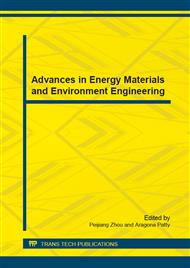p.220
p.225
p.230
p.235
p.239
p.245
p.249
p.253
p.257
Solutions for Extracting Air and Smoke in Underground Subway Station
Abstract:
Everyday there are about 7 million passengers commuting by subway in Shanghai, China. Although Shanghai has one of the largest subway networks in the world, yet this subway system is still full of passengers during the rush hours. Extracting air and smoke is important part of the station ventilation system which supplies enough fresh air in the crowded station. As we know, the underground subway stations are built in an enclosed space where needs air circulation far more than other type of station. This paper focuses on the designs of duct layout and valve control in an underground subway station. The authors give three solutions to return air and exhaust smoke in the underground station platform area and entrance area. The goal of this paper is to compare these three ventilation solutions in the normal time and in the fire accident. The result of analyzing and applying these solutions are concluded in the paper.
Info:
Periodical:
Pages:
239-244
Citation:
Online since:
December 2014
Authors:
Keywords:
Price:
Сopyright:
© 2015 Trans Tech Publications Ltd. All Rights Reserved
Share:
Citation:


